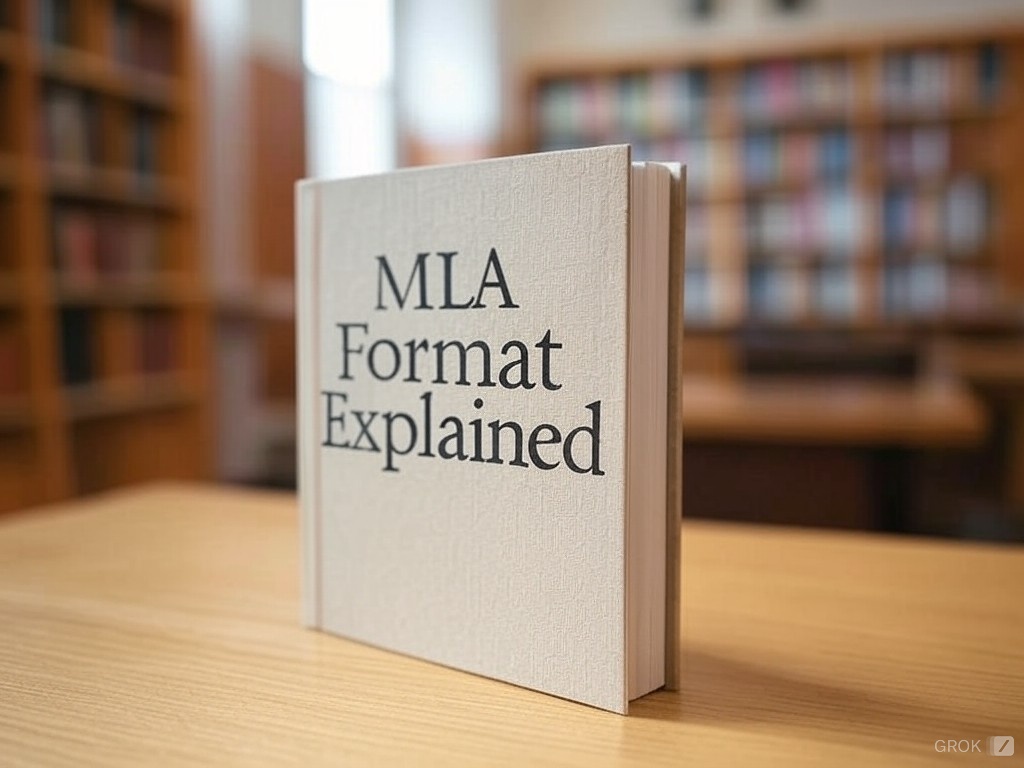What is MLA Format? A Complete Guide with Examples

What is MLA Format? A Complete Guide with Examples
MLA (Modern Language Association) format is the standard citation style for humanities disciplines, especially literature and language studies. Whether you're writing an essay about Shakespeare or analyzing contemporary poetry, understanding MLA format is essential for academic success.
This comprehensive guide will walk you through everything you need to know about MLA format, from basic document formatting to creating perfect citations. We'll provide clear examples and practical tips to help you master this widely-used citation style.
MLA format requires specific formatting for your document, in-text citations, and Works Cited page. The current version (MLA 9th edition) emphasizes flexibility to accommodate various source types while maintaining consistent citation principles.
Key Elements of MLA Format
-
Document Formatting
- 1-inch margins
- Double-spaced text
- Times New Roman 12pt
- Header with last name and page number
-
First Page Header
- Student name
- Instructor name
- Course information
- Date
-
In-Text Citations
- Author-page format
- Parenthetical citations
- Signal phrases
Citation Examples
• Basic Format: (Smith 23)
• No Author: ("Article Title" 45)
• Multiple Authors: (Smith and Jones 89)
Works Cited Page Guidelines
-
Basic Format
- Title centered: "Works Cited"
- Double spacing
- Hanging indentation
- Alphabetical order
-
Common Sources
- Books
- Articles
- Websites
- Digital media
-
Special Cases
- Multiple authors
- Online sources
- Container systems
- Incorrect header formatting
- Missing page numbers in citations
- Incorrect Works Cited formatting
Frequently Asked Questions
MLA 9th edition introduced more flexibility for citing digital sources, simplified guidelines for citing online sources, and added new guidance for citing social media. It also emphasizes the importance of citing sources consistently rather than following rigid rules.
For websites, include the author's name (if available), title of the page, website name, publication date, and URL. For example: Smith, John. "Article Title." Website Name, 15 Jan. 2023, www.website.com/article.
Yes, images must be cited both in-text and in your Works Cited page. Include the creator's name, title of the work, date of creation, and the location where you found it (museum, website, etc.).
Other Articles You Might Like
How AI Writing Assistants Are Revolutionizing the Publishing Industry
An in-depth examination of how AI writing technologies are transforming workflows, expanding capabilities, and creating new possibilities across all sectors of publishing, from books and magazines to academic journals and digital content platforms.
How to Conclude an Essay: Mastering the Art of Essay Endings with AI Writing Tools
An essay's conclusion is your last chance to leave an impression on your reader. It provides closure to your argument and helps to reinforce the points you've made throughout your writing. Yet, many students struggle with crafting an effective conclusion. In this comprehensive guide, we'll explore how to conclude an essay in a compelling way, focusing on techniques that align with what Yomu.ai and other academic AI writing tools are designed to help with—making the writing process more streamlined, insightful, and effective.
How to Write a Conclusion Paragraph: Tips and Examples
Master the art of writing powerful conclusion paragraphs with this comprehensive guide. Learn essential techniques, see real examples, and discover how to leave a lasting impression on your readers.
How to Write a Research Question: Step-by-Step Guide
Learn how to craft effective research questions for your academic papers and thesis. This comprehensive guide covers everything from choosing a topic to refining your question, with examples and expert tips.
How to Cite a YouTube Video
Citing a YouTube video in your academic work is a common task, but it can be tricky if you're not familiar with the proper citation format. This guide will walk you through the process of citing a YouTube video in MLA format, providing you with the information you need to properly reference the video in your writing. We'll also cover the basics of citing other types of online sources, such as websites and social media platforms, to help you stay consistent in your citation practices.
Is Using an AI Essay Writer Cheating or Smart Delegation?
A nuanced exploration of the ethical gray area surrounding AI writing tools in academia, examining when their use crosses the line from legitimate assistance to academic dishonesty.
